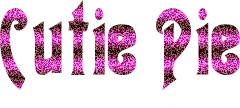Today, concordance seems to be an important asset in investigating language development. Without concordances, everything in language pedagogy seems to be wrong and dysfunctional. Concordance an alphabetical listing of words in a text (called search/key words) together with the contexts in which they appear, and the concordance software is the program which supplies these listings. It can provide statistical lists for all the words in the text/corpus object of study, statistics which can appear in alphabetical order or with regard to the frequency of occurrence of each word. There are many example of concordance that we can use now such as Wordsmith, MonoConc Pro and Microconcord. In our country, the usage and analysis of language corpora didn't spread widely since it was new to us.With the concordance, we can analyze the word easily but to get the result that we want, it might take difficult task to do because the high amount of data itself.
Example of concordance application program:
Concordancers have been widely used in linguistics, above all in text-type studies which rely on quantitative analysis. Yet, linguistics is not the only field where concordancers may prove useful; apart from genre studies, translation and literary criticism might also be benefitted from the advantages these programs present. Thus, if stylistic analysis is nowadays applying concordancers to detect cases of literary influence (in some cases mere plagiarism), by the same token, the programs can be useful to detect cases of intertextuality, be it intertextuality ‘proper’ (specific texts overtly drawn upon within a text), or interdiscursivity (how a discourse type is constituted by a combination of other discourse types). Obviously, concordancers do not work on ‘nothing’: you need a first ‘intuition’ to start with but, once you have it, concordancers are very simple to use and save a great deal of time: collocation, frequencies (and their implications regarding lexical cohesion), or intertextual links among texts are spotted quickly and efficiently.
When I began my research, I had no idea how helpful a concordancer would prove. My object of study was Angela Carter’s "The Company of Wolves", a tale classified as one of the landmarks of feminist revised versions of fairy-tales, classification which I discussed in my work. Thus, although I did not deny its evident intertextual connections with the famous story of Little Red Riding Hood, I had also found traces of other texts and, above all, of other generic types. The purpose of my work was, then, to see which generic type(s) were present in the tale, how they showed in it and, above all, why.
Norman Fairclough’s Critical Discourse Analysis was adopted as the framework for the analysis, an approach that attempts both a description of discourse (as practised within linguistics by discourse analysts) and, mostly, an interpretation of discourse as social practice, aiming at making the opaque aspects of discourse more visible (discourse that is determined to a great extent by hegemonic ideologies). A key issue in Fairclough’s framework is that of the heterogeneous nature of texts, heterogeneity that can be exploited by the participants of the discursive practices for political purposes ("a strategy for dealing with the problematisation of one’s position is to be creative, to put together familiar discourse types in novel combinations as a means of finding new ways of doing things to replace the now-problematic old ones.", Fairclough 1989:171). The first task in my analysis was, then, to establish the degree of heterogeneity of the text under discussion, therefore establishing what generic type(s) it drew upon.
In order to delimitate the kind of genres present in our text, I also took into account the kind of multidimensional approach proposed by Biber (1989), which accounted for a number of text-types regarding both their linguistic co-occurrence patterns and their shared functions. His approach attempts to identify the linguistic parameters along which genres vary, and to do so he incorporates quantitative analysis (computer-based) to account for the co-occurrence of bundles of linguistic features in texts, which will be later ‘qualitatively’ analysed and interpreted with regard to the underlying function of the texts.
My main work hypothesis was that Carter’s tale was mainly constructed upon two different generic types –religious sermons and folk tales- which, although theoretically and ‘functionally’ different, shared a certain number of traits which made them susceptible of being combined within a single text with a clear purpose in mind. I then proceeded to establish the frequency of lexical apparitions and collocations, together with verb tenses and the like with the help of a concordancer, to prove my hypothesis. Once this was achieved, I realised that both generic types mixed in the text in a very interesting way, ‘cross-referring’ to each other as the narrative unfolded, and here also the concordancer proved really useful. I also made use of it to establish the cohesive patterns of the text, as well as certain features of Carter’s style (such as the recurrent use of hypallages or transferred epithets).
Once this was done, I searched for the explicit intertextual links of Carter’s tale with other texts. Apart from the obvious connections with different versions of Little Red Riding Hood, the text also hinted at some links with religious writings, certain poets, some Renaissance works (above all, the recurrent use of a number of images and expressions), and gothic novels, all of which I either scanned or downloaded from Internet sources to run the concordance program and spot the appearances. Obviously, all these things can also be –and still are- done ‘manually’, but at the risk of wasting a considerable amount of time and, also, of losing our patience more often than not!
The concordancer used in my research was the commercial program called Monoconc. Yet, as my work advanced, I became more interested in this kind of programs, and started to search the net for other resources of the like. As it happens, I found two other concordancers which were rather attractive, relatively easy to use and, above all, free. I considered then that there might be more researchers interested in knowing a bit more about them: how they worked, as well as which were their advantages/disadvantages when compared to a commercial one.
That concordance used for literary work and linguistic.thank you.
Subscribe to:
Post Comments (Atom)








2 comments:
Salman,
You didn't answer the question on concordance!
I'm not sure what you have been doing but I'm not happy with your blog postings.
za
Salman,
FYI, the posting on concordance is a pair work assignment. So, who is your partner? I didn't find your friend's name in this posting.
Post a Comment